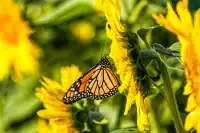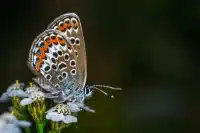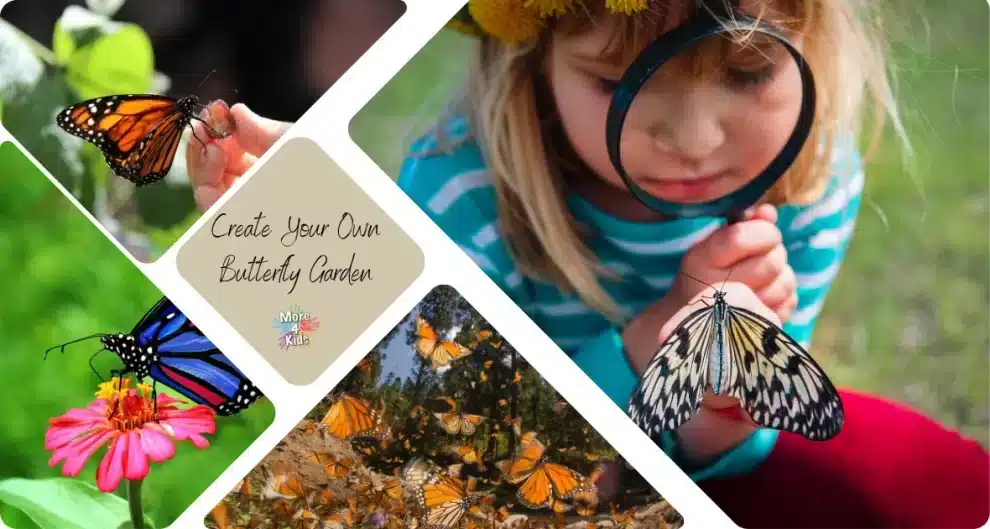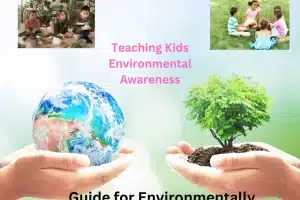Hello, fellow parents and guardians! It’s Sara from More4Kids here, and today I’m excited to share with you a wonderful project that you can do with your little ones – creating a butterfly garden. Lets have some fun! This isn’t just any ordinary garden project. It’s a magical journey that combines fun, education, and the beauty of nature all in one.
As a parent, I’m always on the lookout for activities that are not only enjoyable but also provide a learning experience for my kids. And what could be better than creating a butterfly garden? It’s an outdoor activity that encourages our children to interact with nature, learn about different species of plants and butterflies, and understand the importance of biodiversity. Plus, it’s a project that yields results you can see and enjoy every day.
The Benefits of Creating a Butterfly Garden
Table of Contents
Creating a butterfly garden has numerous benefits. It’s a hands-on way for children to learn about the life cycle of butterflies and the role they play in our ecosystem. It also teaches them about the importance of native plants and how they support local wildlife.
Moreover, this activity fosters a sense of responsibility and care for the environment. It’s a practical lesson in conservation and sustainability. And let’s not forget the physical benefits of gardening – it’s a great way for kids to get some exercise and fresh air!
Step 1: Understand the Importance of Native Plants
According to the National Wildlife Federation, native plants have formed symbiotic relationships with native wildlife over thousands of years, offering the most sustainable habitat. These plants thrive in the soils, moisture, and weather of your region, requiring less supplemental watering and fewer pest control measures. They also assist in managing rainwater runoff and maintaining healthy soil.
Step 2: Choose the Right Plants in a Butterfly Garden
Butterflies are attracted to certain types of plants, both for nectar and for laying their eggs. Some popular choices include milkweed, butterfly bush, and purple coneflower. However, the best plants for your garden will depend on your local climate and the specific species of butterflies native to your area.
Step 3: Plan Your Garden
When planning your butterfly garden, consider the needs of both the butterflies and the plants. Most butterfly-attracting plants prefer full sun, so choose a location that gets plenty of sunlight. Also, remember that butterflies need shelter from wind and rain, so include some taller plants or structures where they can take cover.
Step 4: Involve Your Children in Planting and Maintenance
Planting the garden can be a fun activity for your children. Let them help with digging holes, planting seeds or seedlings, and watering. As the garden grows, they can also help with tasks like weeding and deadheading flowers. This can be a great opportunity to teach them about the life cycle of butterflies and the importance of plants in our ecosystem.
Step 5: Observe and Enjoy

Creating a butterfly garden with your children can be a rewarding experience that teaches them about nature and helps them develop a sense of responsibility for the environment. Plus, it’s a great way to spend time together as a family.
Remember, this is a general guide and the specifics may vary depending on your location and the local wildlife. Always do further research or consult with a local expert if necessary.
I hope this guide inspires you and your little ones to start your own butterfly garden. It’s a wonderful project that brings joy, learning, and beauty into your backyard. Happy gardening!
Sources:
Frequently Asked Questions
What types of butterflies can we expect to see in a butterfly garden?

The types of butterflies you’ll see will largely depend on your geographical location and the plants you’ve chosen for your garden. Some common butterflies that visit gardens include Monarchs, Painted Ladies, and Swallowtails.
Can we create a butterfly garden if we only have a small space or a balcony?
Absolutely! Many butterfly-friendly plants can be grown in pots or containers. Even a small balcony garden can attract butterflies if you choose the right plants.
How long does it take for a butterfly garden to attract butterflies?

This can vary depending on several factors, including the types of plants you’ve chosen, the time of year, and the local butterfly population. However, you might start seeing butterflies as soon as the plants begin to flower.
How can we involve our children in maintaining the butterfly garden?
Children can be involved in many ways, such as watering the plants, weeding, and deadheading flowers. They can also help observe the butterflies and learn to identify different species.
Are there any risks or downsides to creating a butterfly garden?
There are very few downsides to creating a butterfly garden. However, keep in mind that you might also attract other insects, some of which may be pests. It’s also important to avoid using pesticides in your butterfly garden, as these can harm butterflies and other beneficial insects.












Add Comment